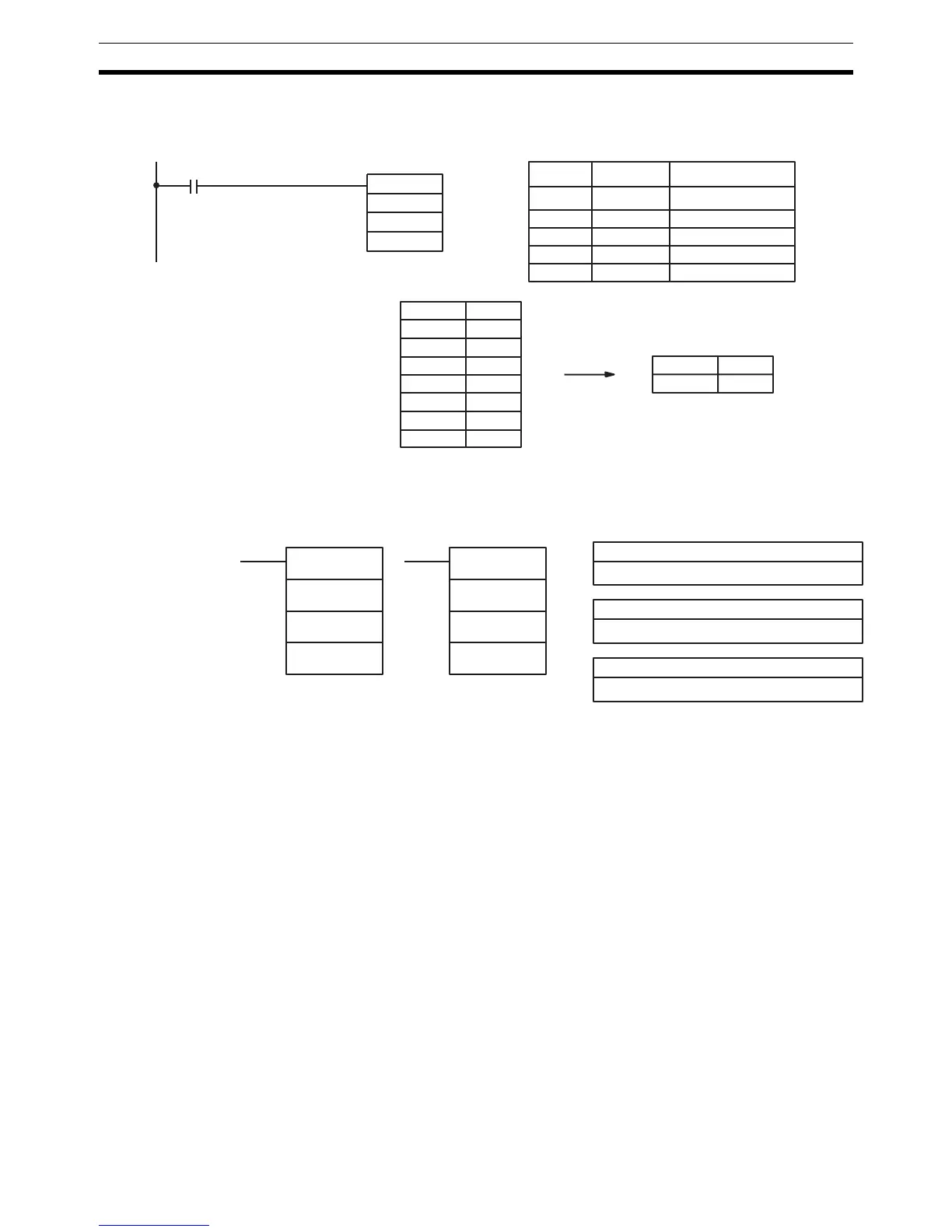344
Special Math Instructions Section 5-23
Example In the following example, the BCD contents of the 8 words from DM 0000 to
DM 0007 are added when IR 00001 is ON and the result is written to DM
0010 and DM 0011.
5-23-5 ARITHMETIC PROCESS – APR(––)
Limitations For trigonometric functions S must be BCD from 0000 to 0900 (0°≤ θ ≤ 90°).
DM 6144 to DM 6655 cannot be used for D.
Description When the execution condition is OFF, APR(––) is not executed. When the exe-
cution condition is ON, the operation of APR(––) depends on the control word
C.
If C is #0000 or #0001, APR(––) computes sin(
θ) or cos(θ)*. The BCD value of
S specifies
θ in tenths of degrees.
If C is an address, APR(––) computes f(x) of the function entered in advance
beginning at word C. The function is a series of line segments (which can
approximate a curve) determined by the operator. The BCD or hexadecimal
value of S specifies x.
Flags ER: Indirectly addressed EM/DM word is non-existent.
(Content of *EM/*DM word is not BCD, or the EM/DM area boundary
has been exceeded.)
For trigonometric functions, x > 0900. (x is the content of S.)
A constant other than #0000 or #0001 was designated for C.
The linear approximation data is not readable.
EQ: The result is 0000.
@SUM(−−)
DM 0000
#0008
00001
DM 0010
Address Instruction Operands
00000 LD 00001
00001 @SUM(−−)
# 0008
DM 0000
DM 0010
DM 0000 0001
DM 0001 0002
DM 0002 0003
DM 0003 0004
DM 0004 0005
DM 0005 0006
DM 0006 0007
DM 0007 0008
DM 0010 0036
DM 0011 0000
C: Contr ol w ord
IR, SR, AR, DM, EM, HR, TIM/CNT, LR, #
S: Input data source word
IR, SR, AR, DM, EM, HR, TIM/CNT, LR
Operand Data Areas
D: Result destination word
IR, SR, AR, DM, EM, HR,TIM/CNT, LR
Ladder Symbols
APR(−− )
C
S
D
@APR(−− )
C
S
D
